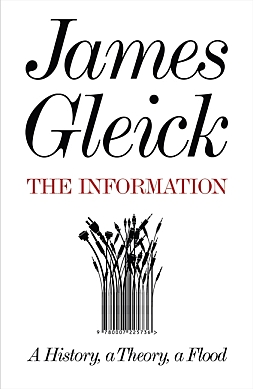- HOME
- INTRO TO THE FORUM
- USE AND MISUSE
- BADLY WRITTEN, BADLY SPOKEN
- GETTING
TO KNOW ENGLISH - PREPARING FOR ENGLISH PROFICIENCY TESTS
- GOING DEEPER INTO ENGLISH
- YOU ASKED ME THIS QUESTION
- EDUCATION AND TEACHING FORUM
- ADVICE AND DISSENT
- MY MEDIA ENGLISH WATCH
- STUDENTS' SOUNDING BOARD
- LANGUAGE HUMOR AT ITS FINEST
- THE LOUNGE
- NOTABLE WORKS BY OUR VERY OWN
- ESSAYS BY JOSE CARILLO
- Long Noun Forms Make Sentences Exasperatingly Difficult To Grasp
- Good Conversationalists Phrase Their Tag Questions With Finesse
- The Pronoun “None” Can Mean Either “Not One” Or “Not Any”
- A Rather Curious State Of Affairs In The Grammar Of “Do”-Questions
- Why I Consistently Use The Serial Comma
- Misuse Of “Lie” And “Lay” Punctures Many Writers’ Command Of English
- ABOUT JOSE CARILLO
- READINGS ABOUT LANGUAGE
- TIME OUT FROM ENGLISH GRAMMAR
- NEWS AND COMMENTARY
- BOOKSHOP
- ARCHIVES
READINGS IN LANGUAGE
This new section features links to interesting, instructive, or thought-provoking readings about the English language. The selections could be anywhere from light and humorous to serious and scholarly, and they range widely from the reading, writing, listening, and speaking disciplines to the teaching and learning of English.
A compelling chronicle of the role of information in human life
Coming off the press this March is a new book that chronicles the development of information from the beginnings of humanity to the digital age. The book, The Information: A History, a Theory, a Flood by James Gleick (Pantheon, 526 pages), traces the ever-growing role of information in human life brought about by the continuing advances in information technology.

Gleick, a leading science and technology writer, postulates that the impact of information on human affairs came in three installments: the historical part, which covers the thousands of years during which people created and exchanged information without a concept to measure it; the theoretical part, which saw the invention of the telegraph by Samuel Morse and the development of information theory by Claude Shannon; and the flooding part, when the cost of manufacturing computers and other electronic devices continued to decrease exponentially, making the use of information technology grow from a trickle into the flood that now inundates modern life.
Along the way, Gleick provides compelling portraits of the key figures who contributed to the development of our modern understanding of information: Charles Babbage, the inventor of the first great mechanical computer; Ada Byron, the poet’s brilliant and doomed daughter, who became the first true computer programmer; and information-theory pioneers Shannon and Alan Turing, the English mathematician who spearheaded the development of computer science.
In an advance review of The Information: A History, a Theory, a Flood for the Boston Globe, Josh Rothman says that “Gleick’s account is extraordinary in its sweep... beautifully told, extensively sourced, and continually surprising, whether or not you find it ultimately convincing.”
ABOUT THE AUTHOR:
James Gleick, a leading chronicler of science and modern technology, has previously written three bestselling books on the subject: Chaos, which was a National Book Award finalist and has been translated into 25 languages, and Genius: The Life and Science of Richard Feynman and Isaac Newton, two biographies that were short-listed for the Pulitzer Prize.
OTHER INTERESTING READINGS ON LANGUAGE:
In “What Happens in Vagueness Stays in Vagueness,” an essay he wrote for the Winter 2011 issue of City Journal, Clark Whelton laments what he calls “the decline and fall of American English” into vagueness—“the linguistic virus that infected spoken language in the late twentieth century.” Whelton, a speechwriter to two New York City mayors, asks with unconcealed anger: “Is Vagueness simply an unexplainable descent into nonsense? Did Vagueness begin as an antidote to the demands of political correctness in the classroom, a way of sidestepping the danger of speaking forbidden ideas? Does Vagueness offer an undereducated generation a technique for camouflaging a lack of knowledge?”
Read Clark Whelton’s “What Happens in Vagueness Stays in Vagueness” in City Journal now!
In “Bent Spines,” an essay she wrote for the February 25, 2011 issue of The New York Times, Harvard University English professor Leah Price tells of the time when a painful injury made her unable to sit. She could choose only between standing and lying on my back, and with no lap to rest a book on, reading books—which used to be her panacea for every conceivable ailment—became so unwieldy for her. Physical therapy eventually enabled her to sit and use a laptop, and now she’s delighted to report that once again, she can finally curl up with a good book.
Read Lea Price’s “Bent Spines” in The New York Times now!
Click to read comments or post a comment
View the complete list of postings in this section
(requires registration to post)







